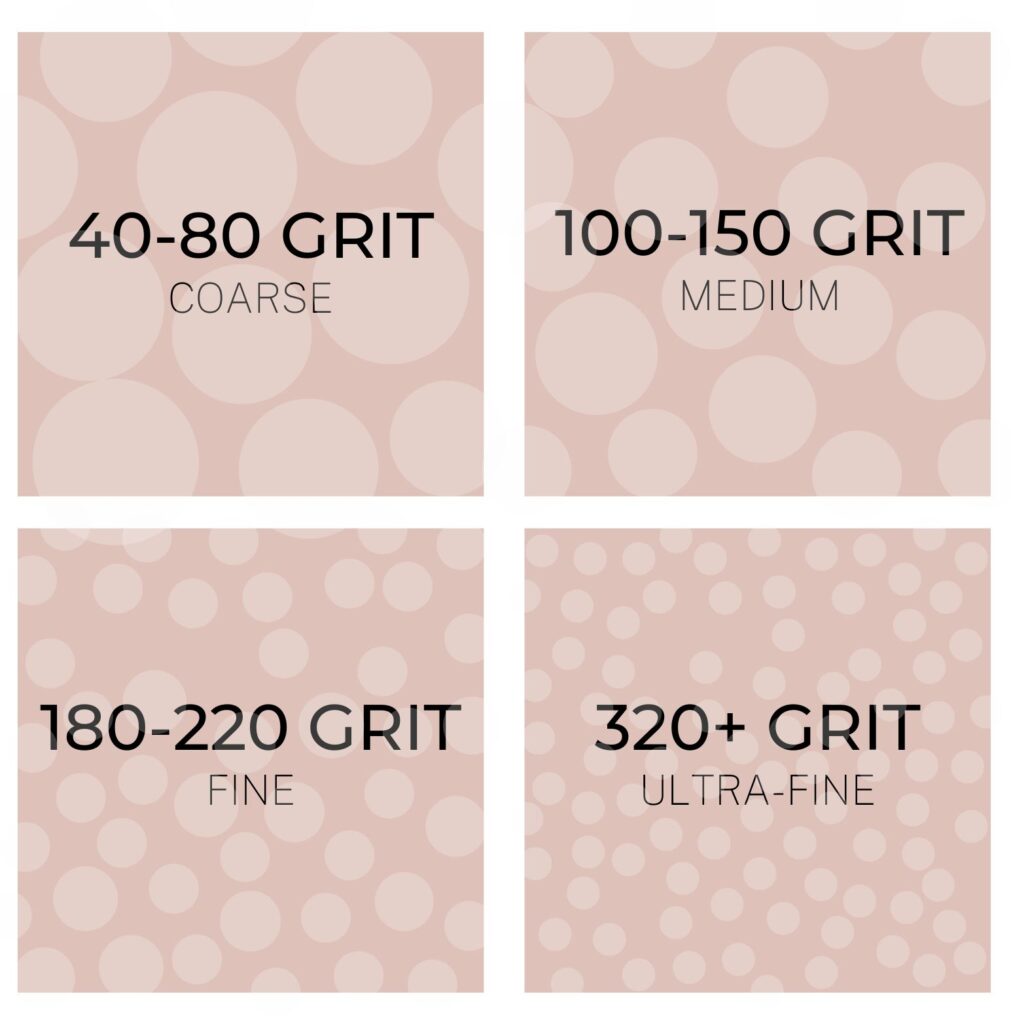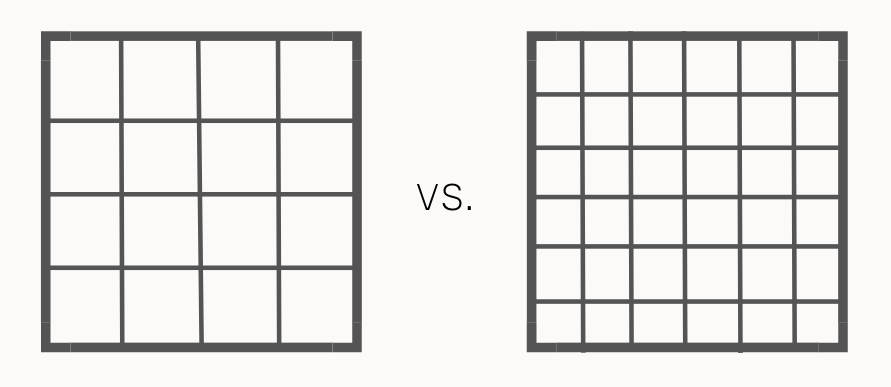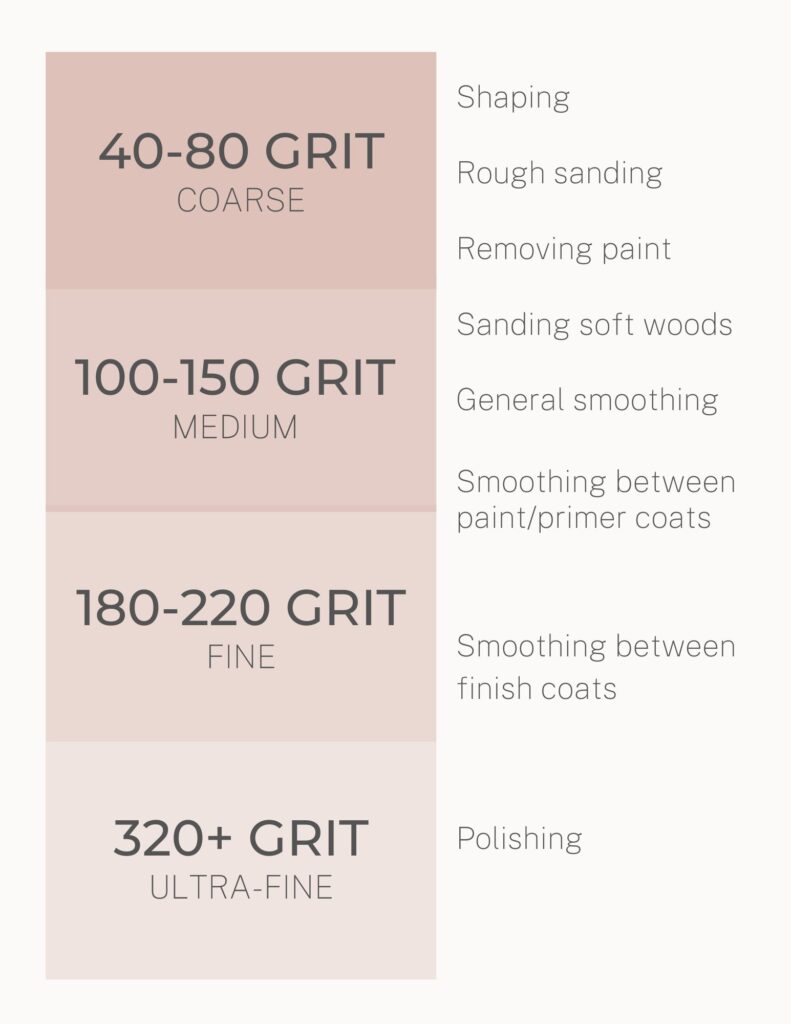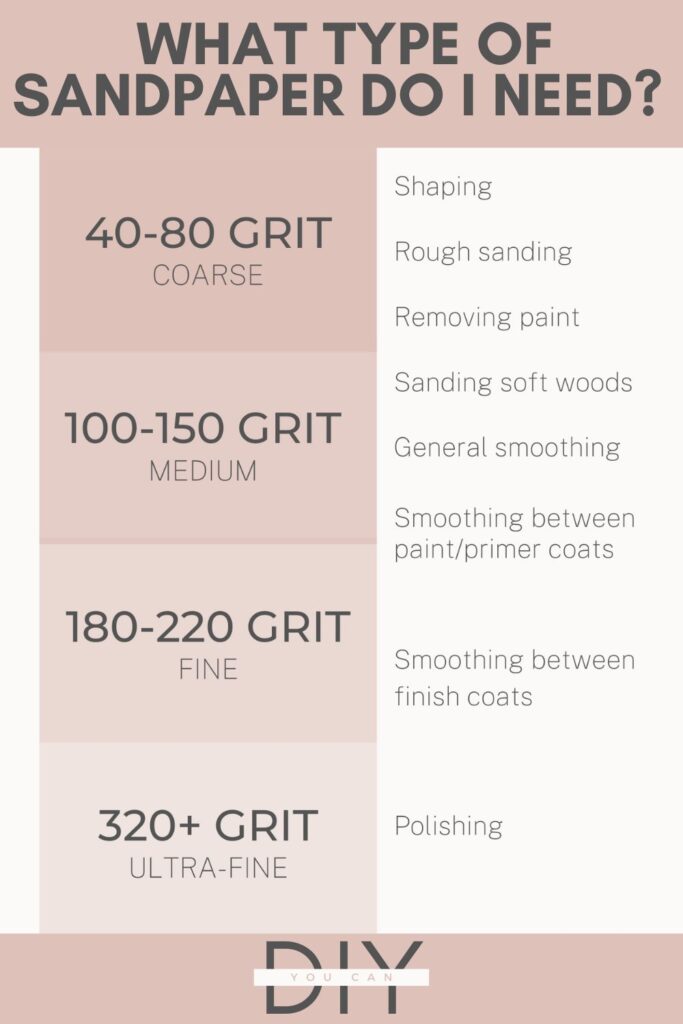This post may contain affiliate links. I try to make my posts as helpful as possible and have great products easy for you to access. The use of these links provides me a small commission at no cost to you. As an Amazon Associate, I earn from qualifying purchases.
Wondering what type of sandpaper you need? You’re not alone! We have put together the best sandpaper grit chart to simplify this step of the process for you!
Join us as we dive into everything do to with sandpaper and get your own printable sandpaper grit chart to have on hand for any DIY project.
Sanding used to be my least favorite part of DIY. And while it’s definitely not my favorite part, I have come to really appreciate quality sanding jobs. Good sanding takes your project to the next level. A basic understanding of sandpaper numbers, types, and purposes will lead to a beautiful finished look for your project.
- A Little Context on Sandpaper
- Coarse Grit vs. Fine Grit: What Do I Need and When?
- Sand Paper Grit Chart
- Sanding FAQ’s
- Other Cool Sanding Hacks
- A Few of My Favorite Sanding Products to Add to Your Collection
- Some of My Favorite DIY Projects That Required Sanding
- Want to save or share this Sandpaper Grit Chart? Pin it on Pinterest!
A Little Context on Sandpaper
There are basically four main categories of sandpaper numbers: Coarse grit, medium, fine, and ultra-fine grit. But you may be more familiar with the different grit numbers you see on your sandpaper. Sandpaper numbers can range from 40-600+.

The number is a little counterintuitive, it represents the sieve (or filter) that was used for the particles on the paper. The number on your sandpaper correlates with the amount of mesh used per inch on the sieve. Therefore a higher amount of mesh is going to result in smaller/more fine particles. When less mesh is used per inch, larger particles pass through, resulting in a more coarse/rougher material.

Coarse Grit vs. Fine Grit: What Do I Need and When?
So what grit of sandpaper do you use and when? Typically, you will start with a low grit number (40-80) and work your way up (220). The more you need to remove, the lower the grit you want to start with. If you are stripping and smoothing out really rough pieces, start with 40-80 grit. For smaller imperfections and general smoothing use 100-220. If you want a really smooth polish use 320+.
Additionally, it is best practice to not “skip grits”, or jump from a low sandpaper number to a high number. The higher number of grit (finer) can’t smooth the rough surface created by the lower grit (coarse). Gradually move from low-grit to higher-grit sandpaper.
Sand Paper Grit Chart

Sanding FAQ’s
What is the best sandpaper for drywall?
The best sandpaper for drywall mud is going to be a medium grit, around 150-180. This will help knock down and smooth out the mud, while not tearing into your sheetrock and tape.
What grit sandpaper for cabinets?
The grit of sandpaper for your cabinets depends on what you want to accomplish. If you are removing a topcoat or finish, start with a low, coarse grit like 60-80, then slowly work up to a fine grit around 220.
If you are simply scuff sanding to add a new coat of paint, you can get away with just a 220 grit.
What grit sandpaper for primer before paint?
After priming, you want to sand before adding paint. So what grit of sandpaper do you want for the primer? A medium grit around 150-180 is preferable! This will create a smooth surface that your paint will adhere to nicely.
Other Cool Sanding Hacks
- If hand sanding, add duct tape to the back of your sandpaper to prevent ripping.
- Scribble lightly with a pencil on your surface, then sand. Once all the pencil marks are gone you know you have evenly sanded your entire surface. This helps prevent over-sanding and missing patches.
- Use your drill. Save a little elbow grease by converting your drill into an electric sander. Simply purchase a sandpaper drill bit and you’re set!
- Wrap your sandpaper around a wooden block for easier grip.
- Put your sandpaper to use around the house – sharpen your dull scissors, scuff the bottom of your shoes for better traction, or lightly sand your garden seeds for better germination.
So there you have it, you now know more about using sandpaper than the average human. And hopefully on your next project when you wonder “What type of sandpaper do I need?” you will know!
What did I miss? Comment below with your best sanding hacks!
A Few of My Favorite Sanding Products to Add to Your Collection
Ryobi Orbit Sander, battery-powered
Dremel Multitool (the sander attachment on this one is amazing!)
Some of My Favorite DIY Projects That Required Sanding
Let’s be honest, most DIY projects require sanding… but here are a few of my favorites you can put your new sanding skills to use!



